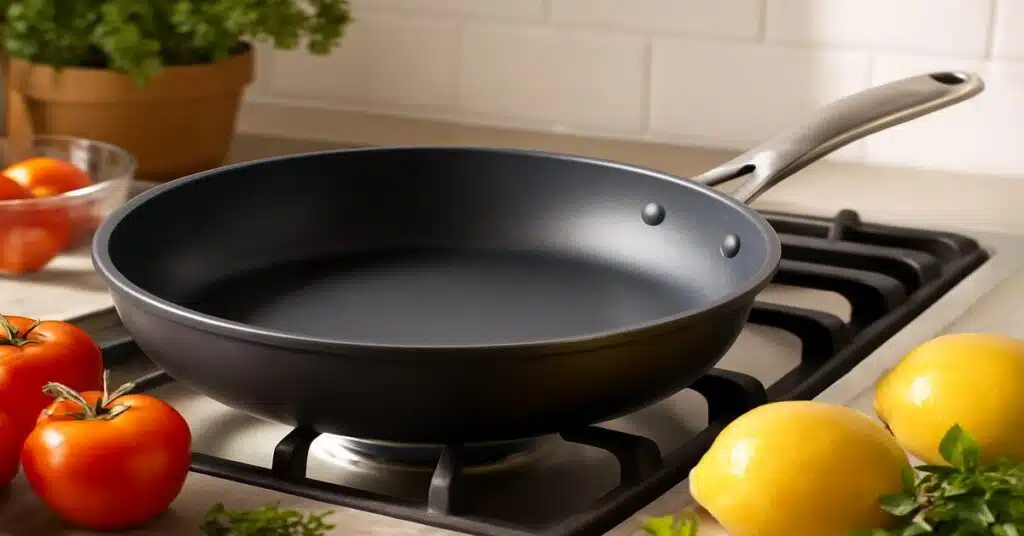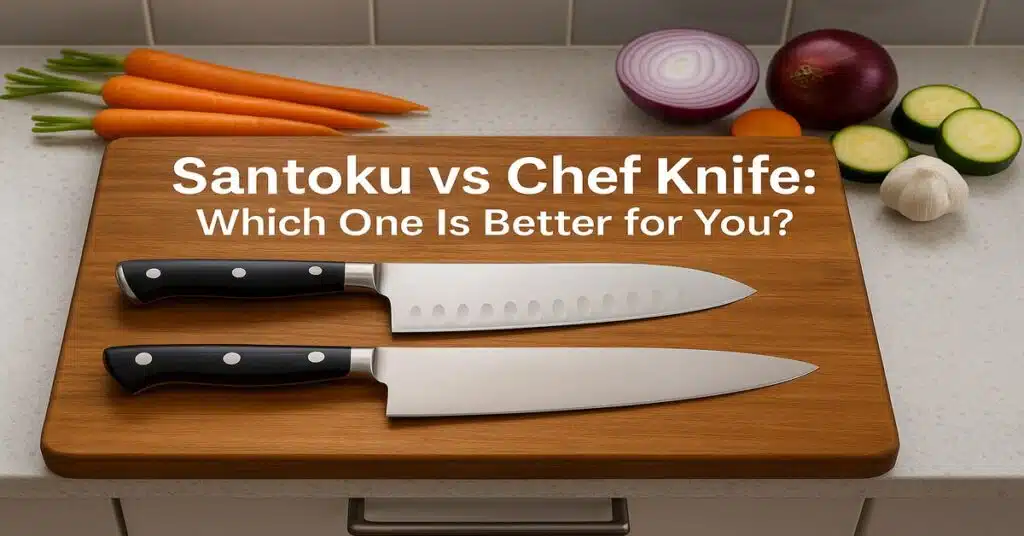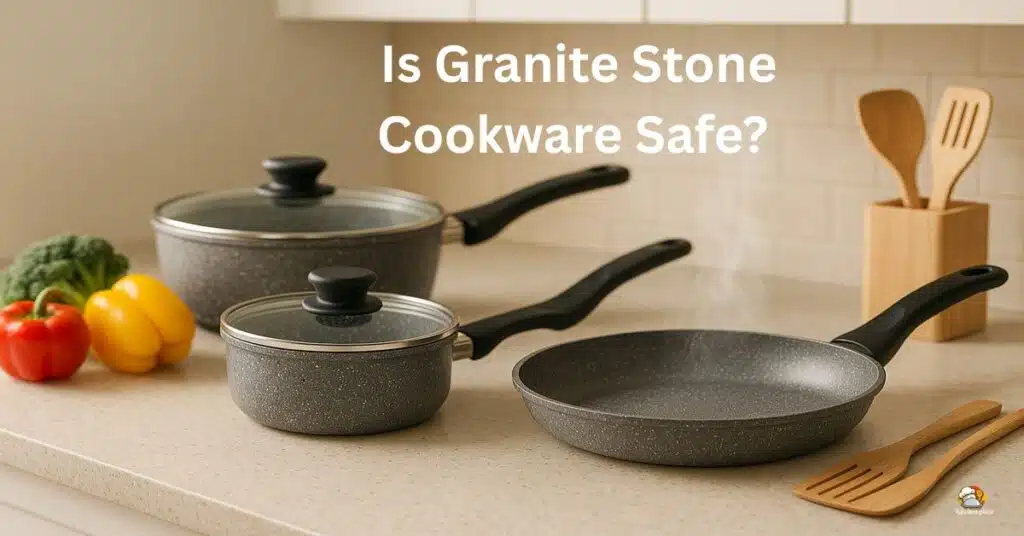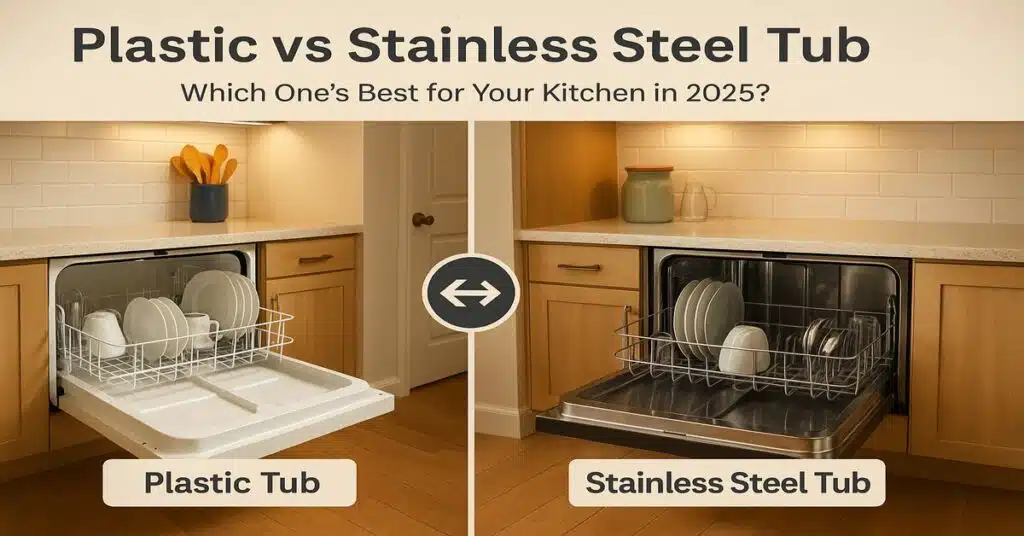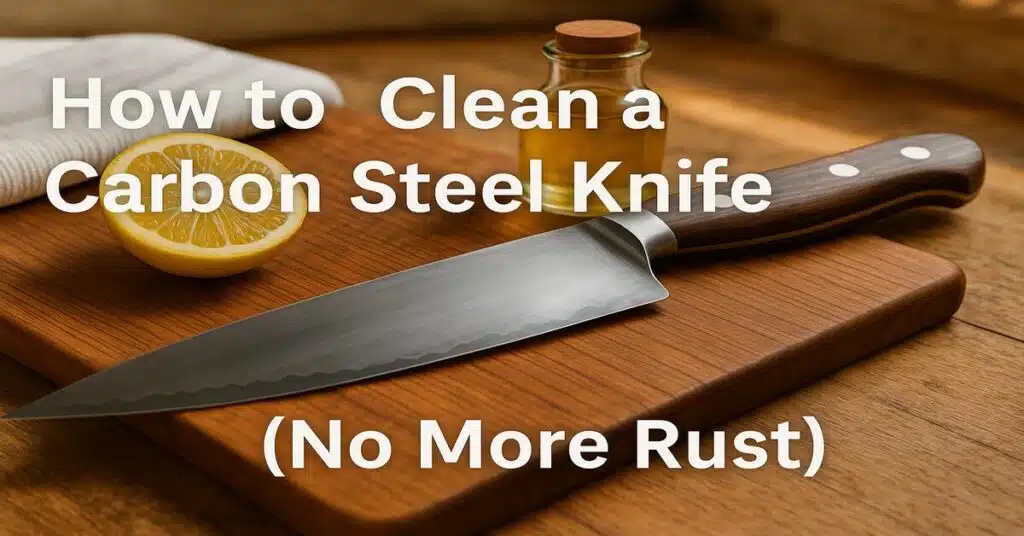Why Choosing the Right Knife Matters
If you’ve ever wondered about the difference between a fillet knife vs boning knife, you’re not alone. I used to think all sharp knives were basically the same—until I butchered my first fish with the wrong blade. The result? Shredded meat, wasted portions, and a frustrating mess.
Choosing the right knife can change your cooking game, especially if you’re into grilling, BBQ, meal prep, or even catching your own fish. In this guide, I’m going to share everything I’ve learned from hands-on experience and years of testing knives in real kitchens. We’ll keep it simple, honest, and super practical so you can make the best choice for your kitchen needs.
What is a Fillet Knife?
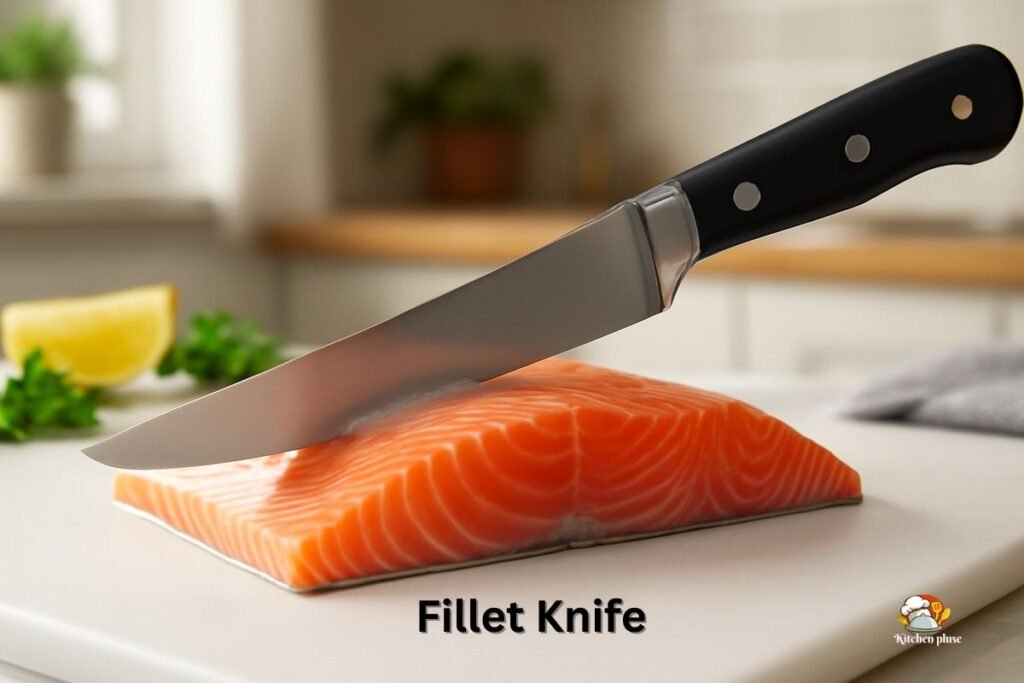
A fillet knife is a specialized kitchen tool designed to precisely remove bones and skin from delicate meat, especially fish. Its most defining features? A thin, flexible blade that curves just enough to glide along bones without tearing into the flesh.
When I started fishing on weekends, I quickly realized how important the right tool was. I remember trying to clean a trout with a standard chef’s knife—big mistake. But with a flexible fillet knife, the process became smooth and satisfying.
Key features:
- Blade length: 6–9 inches
- Thin and curved for flexibility
- Designed for delicate work: fish, chicken, skin removal
This type of knife is also handy for filleting chicken and working with fine cuts of meat. Outdoor chefs, anglers, and home cooks all love the kitchen fillet knife for its precision.
What is a Boning Knife?

A boning knife is made for separating meat from bones, especially in larger, denser proteins like pork, beef, and poultry. Think of it like a surgeon’s scalpel in your kitchen.
I still remember trying to debone a chicken thigh with a dull paring knife. It was awkward and unsafe. After switching to a stiff boning knife, I felt like a pro.
Key features:
- Blade: 5–7 inches long
- Sturdy, slightly curved or straight
- Semi-flexible or rigid
- Ideal for trimming fat and removing bones from meat
Whether you’re working with ribs or whole chickens, this knife gives you control. It’s a true meat processing knife.
Fillet Knife vs Boning Knife: Side-by-Side Comparison Table
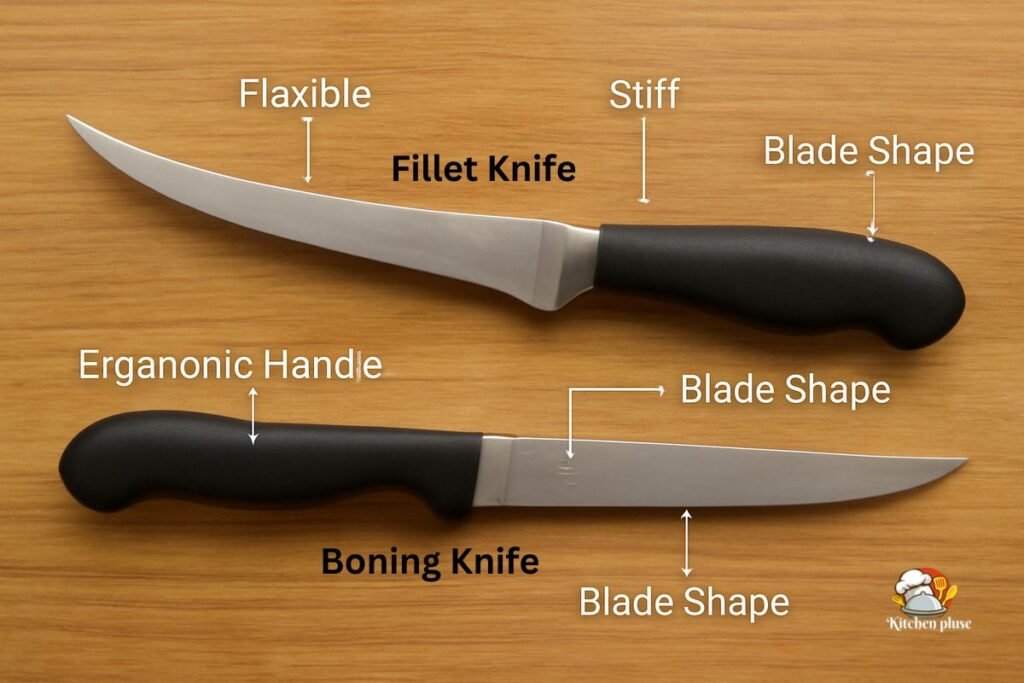
| Feature | Fillet Knife | Boning Knife |
| Blade Type | Flexible, thin | Stiff or semi-flexible |
| Best For | Fish, delicate meats | Red meat, poultry |
| Common Uses | Filleting, skinning | Deboning, trimming |
| Blade Shape | Curved | Straight/Curved |
Many people use the terms filet knife vs boning knife or even “boning filleting knife” interchangeably. While similar, they serve different functions—and knowing when to use each is a game-changer.
Which Knife Is Better for Meat?
If you cook steak at home like I do, you know that cutting meat isn’t just about slicing—it’s about precision and control.
When it comes to meat prep, the boning knife is the better choice. It’s sharp, stiff, and narrow—perfect for trimming fat, cutting through joints, and working around bones. I often use it when prepping brisket, cleaning pork ribs, or removing silver skin from a roast.
Last weekend, I used my best boning knife for meat to break down a whole rack of lamb. The blade stayed steady, and I could easily guide it between muscle and bone. That level of control matters.
A fillet knife, on the other hand, is too flexible for thicker cuts. It bends easily and can slip if you’re working with dense meat like beef shoulder or bone-in pork. You don’t want that when handling raw meat.
Quick Tips for Meat Cutting:
- Use a boning knife for trimming fat, deboning chicken thighs, and prepping large cuts.
- Keep your blade sharp and stiff for clean, controlled cuts.
- A meat processing knife should fit well in your hand—comfort is just as important as sharpness.
If you prepare meat often—whether for BBQ, family dinners, or weekly prep—a boning knife is the real MVP. It makes the job easier, safer, and a lot cleaner.
Which Knife is Better for Fish?
If you love fish like I do—whether it’s flaky salmon or fresh tilapia—then you’ll know how important it is to use the right tool. Between a boning knife vs fillet knife for fish, the fillet knife is the clear winner for most jobs.
It’s thin. It’s flexible. It bends smoothly along the bone. That’s why I always reach for my best fillet knife for fish when I’m prepping trout for the grill or slicing up salmon for a Sunday dinner.
Why Fillet Knives Work So Well for Fish
I still remember the first time I cleaned an Alaskan salmon I caught on a trip. I used a stiff boning knife and ended up wasting so much meat. Once I switched to a kitchen fillet knife, everything changed.
Here’s why:
- The blade is bendy, so it glides under the skin easily.
- You lose less meat because it follows the fish’s shape.
- It’s perfect for delicate cuts like sashimi or fish tacos.
If you’ve ever made Cajun-style catfish or cleaned a trout near the lake, you’ll know how useful this kind of knife can be.
Can You Use a Boning Knife for Fish?
You can. A boning knife for fish might work in some cases, like when the fish is big and thick, such as tuna. But for thin, detailed work—like removing skin or cutting fillets—a fillet knife simply does a better job.
Which Knife is Better for Chicken? Fillet Knife vs Boning knife
When working with chicken, the best knife depends on what you’re doing.
If you’re cutting around joints, separating thighs, or removing cartilage, the boning knife is your best friend. Its stiff blade gives you control to go around bones without damaging the meat.
But if you want to remove the skin smoothly or make clean slices for grilling, the fillet knife for chicken is perfect. Its flexible blade glides easily through soft cuts, especially when portioning breast meat.
Real-Life Cooking Tip
When I make butter chicken at home, I use a boning knife for chicken thighs to separate the bone. Then I switch to my fillet knife for slicing the meat into thin, even pieces. It saves time and gives me clean cuts every time.
When to Use Each Knife:
Use a boning knife when:
- You’re separating joints or cutting close to bone
- You want firm control while trimming
- You’re working with raw, whole chicken
Use a fillet knife when:
- You need smooth slices
- You’re removing skin or fat
- You’re prepping chicken breast for stir-fry or grilling
Both are useful, but knowing which to use will make your prep faster and cleaner.
Fillet Knife vs Boning Knife Blade Features: Flexibility, Sharpness & Shape
When choosing between a fillet knife and a boning knife, the blade details matter more than you might think. From sharpness to handle grip, small things make a big difference. Let’s break it down so you can choose wisely.
Blade Flexibility
- Fillet knives are very flexible. This helps them bend around bones and remove skin from fish smoothly. That’s why they’re great as an outdoor fillet knife, especially if you catch and clean your own fish.
- Boning knives are usually semi-rigid or stiff. That extra firmness helps you cut through meat and cartilage with control.
Choose flexibility when working with soft meats or fish. Choose stiffness when you need strength and precision.
Blade Shape: Curved vs Straight
- Fillet knife blades are thin and curved, ideal for delicate work.
- Boning knife blades are mostly straight or slightly curved, giving you clean lines through muscle and fat.
If you’re slicing fish fillets, go curved. If you’re trimming brisket or deboning poultry, straight is the way to go.
Narrow vs Wide Blade Knives
This is one of the most overlooked boning knife features.
- Narrow blades offer better control and are perfect for detailed cutting.
- Wider blades cover more surface and are helpful when trimming larger chunks of meat.
Tip: Use a narrow blade for ribs or chicken thighs. Use a wider blade for roasts and pork shoulder.
Blade Material
Two main types dominate:
- Stainless steel: Rust-resistant and easy to clean. Great for beginners and daily use.
- High-carbon steel: Stays sharp longer and cuts very clean—but needs more care to prevent rust.
If you’re outdoors or near water, go with stainless steel. If you want a sharper, pro-level cut, high-carbon might be for you.
Handle Grip Comfort
Never ignore the grip. A slippery or hard handle can ruin your experience, especially during longer prep sessions.
Look for:
- Ergonomic handles: Fit well in your hand.
- Non-slip grip: Safer, especially when dealing with oily or wet meat.
In my kitchen, I always reach for knives that feel comfortable. A good grip saves your wrist and your time.
Summary Table : Fillet Knife VS Boning Knife
| Feature | Fillet Knife | Boning Knife |
| Flexibility | Very flexible | Semi-rigid to stiff |
| Blade Shape | Curved | Straight or slightly curved |
| Blade Width | Narrow | Narrow or wide |
| Best Use | Fish, soft meat | Meat, poultry, trimming |
| Material | Stainless or carbon | Stainless or carbon |
| Handle | Ergonomic, anti-slip | Ergonomic, firm grip |
Common Mistakes When Choosing Between Fillet knife vs Boning Knife
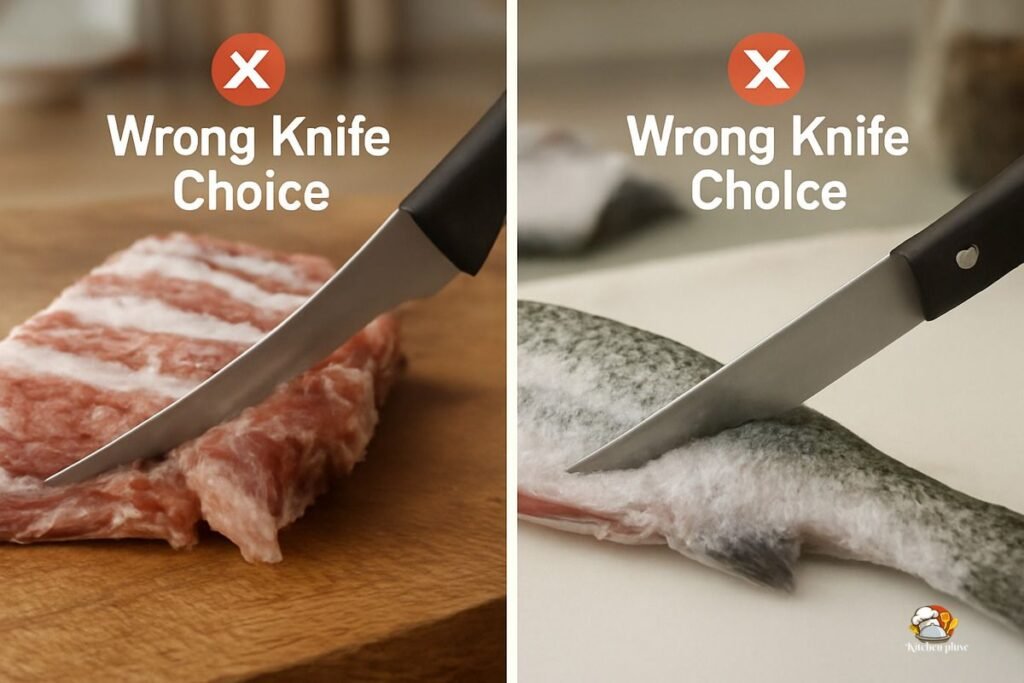
Let’s be real—I’ve made some bad knife choices. And I’m sure I’m not the only one.
One time, I tried to cut pork ribs using a fillet knife. Big mistake. The blade bent around the bone, the meat shredded, and I wasted a good cut. That’s when I realized how much the wrong tool slows you down.
On another day, I used a boning knife to clean a trout. It was too stiff. I couldn’t follow the shape of the bones, and the skin ripped before I even got halfway.
❌ Common Knife-Choosing Errors
Here are some simple but common mistakes people make:
- Using a fillet knife for thick meats like brisket or ribs
- Using a boning knife for delicate fish or skin removal
- Choosing based on looks, not purpose
- Ignoring grip comfort—your hand matters just as much as the blade
- Picking a knife without thinking about what you’ll actually cook
✅ Pro Tip: Think Before You Slice
Ask yourself:
- Am I cutting around joints or cartilage? → Use a boning knife
- Do I need precise, flexible cuts? → Go with a fillet knife
Once you match your knife to your cooking style, prep becomes quicker, safer, and way more satisfying.
Which Knife Should You Buy? (Buying Decision Guide)
Still asking yourself, “Should I buy a boning knife or a fillet knife?” Don’t worry—choosing the right one isn’t hard when you know your cooking style.
Let’s break it down by what kind of cook you are 👇
For Home Cooks
If you prep chicken or cook fish once in a while:
- Best boning knife for meat – Great for trimming chicken and beef.
- Basic fillet knife for fish – Helps with skinning and slicing fish like tilapia.
Tip: Go for a budget-friendly combo set if you’re just starting out.
For Fishermen
If you catch and clean your own fish often:
- Choose a long, flexible outdoor fillet knife.
- Look for blades that are rust-resistant and easy to carry.
Ideal for trout, catfish, or salmon on the go.
For BBQ Lovers
If you smoke brisket, ribs, or large cuts of meat:
- A curved boning knife is a game-changer.
- It helps you trim fat cleanly and work around bones with control.
For Chefs or Butchers
If you handle lots of meat and fish daily:
- Buy both knives.
- You’ll need a boning knife for precision and a fillet knife for clean slices.
Trust me—as someone who cooks often, having both saves time and meat.
Final Tip
Think about what you cook the most. That one detail will guide your decision better than any product label.
FAQs – Answering Real User Questions
Can you use a boning knife to fillet fish?
You can, but it won’t be as smooth. The fillet knife’s flexibility makes it better for fish.
Is a fillet knife sharper than a boning knife?
Not necessarily. It’s thinner and more flexible, but both knives should be equally sharp.
What is the difference between boning and fillet knives?
Boning knives are stiffer and better for meat. Fillet knives are flexible and great for fish.
What type of knife is best for fish?
A flexible fillet knife.
Why do fillet knives bend?
To glide along bones without tearing meat.
Can I use one knife for both boning and filleting?
Technically yes, but it’s not ideal. You’ll get better results with the right tool.
Should I buy a boning knife or a fillet knife?
Depends on what you cook. Meat = boning. Fish = fillet.
How do I sharpen a fillet knife properly?
Use a whetstone or honing rod. Go gently—these blades are thin.
Final Thoughts – Trust Your Tools
Whether you’re new to cooking or have years of experience at the grill, one thing stays the same: the right knife makes a big difference. I’ve personally used both fillet and boning knives for everything from prepping fish on a camping trip to slicing ribs for a family BBQ. Knowing which one to pick saved me time—and frustration.
If I could give one piece of advice, it’s this: trust your tools. A flexible fillet knife gives you clean cuts on delicate meats, while a stiff boning knife makes tough cuts feel easy. You don’t need the most expensive knife—you need the one that fits your style and job.
So now that you understand the difference between a fillet knife vs boning knife, you’re ready to make the right choice. Pick the knife that gives you confidence. Then? Let it do the hard work for you.


